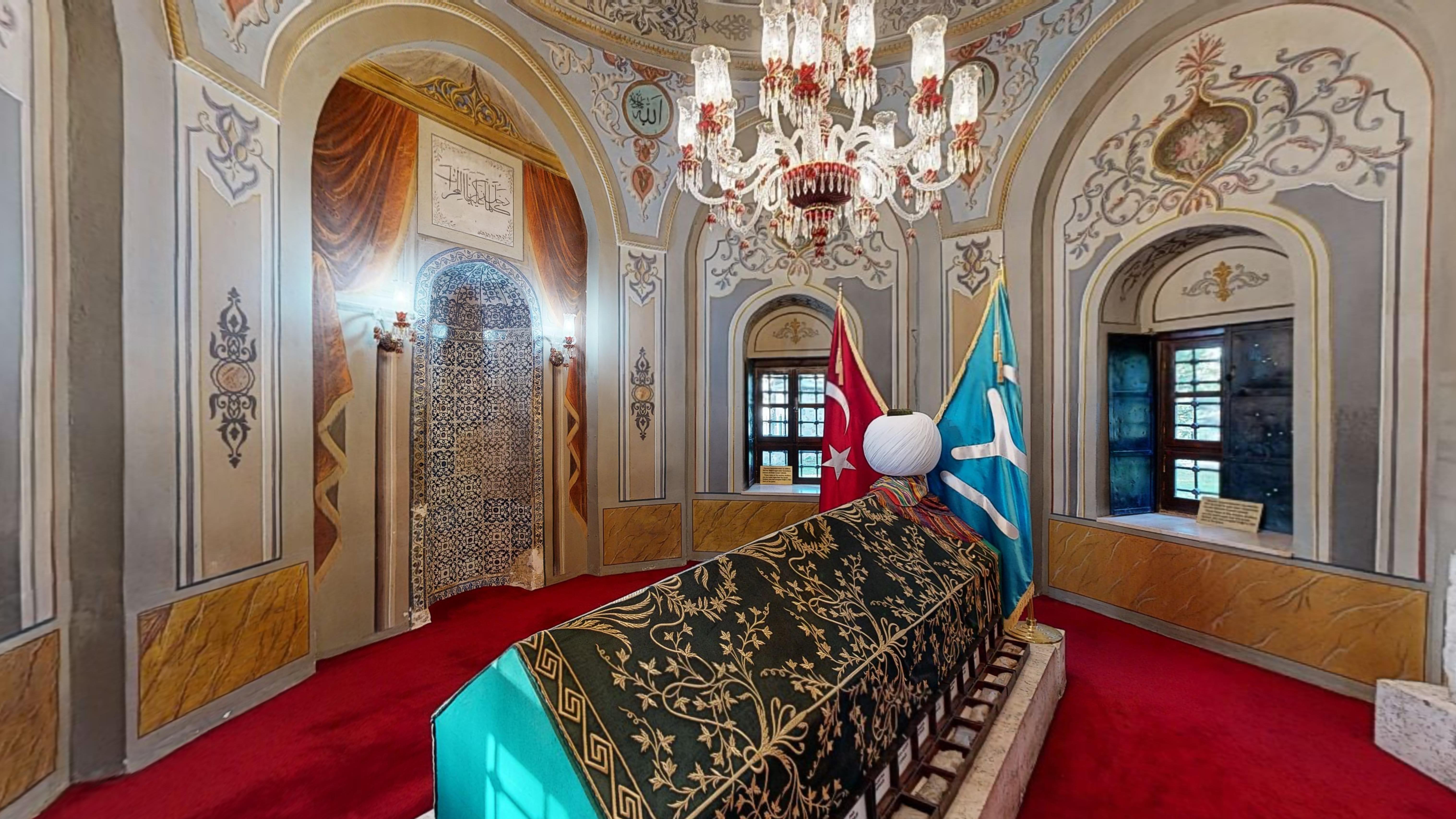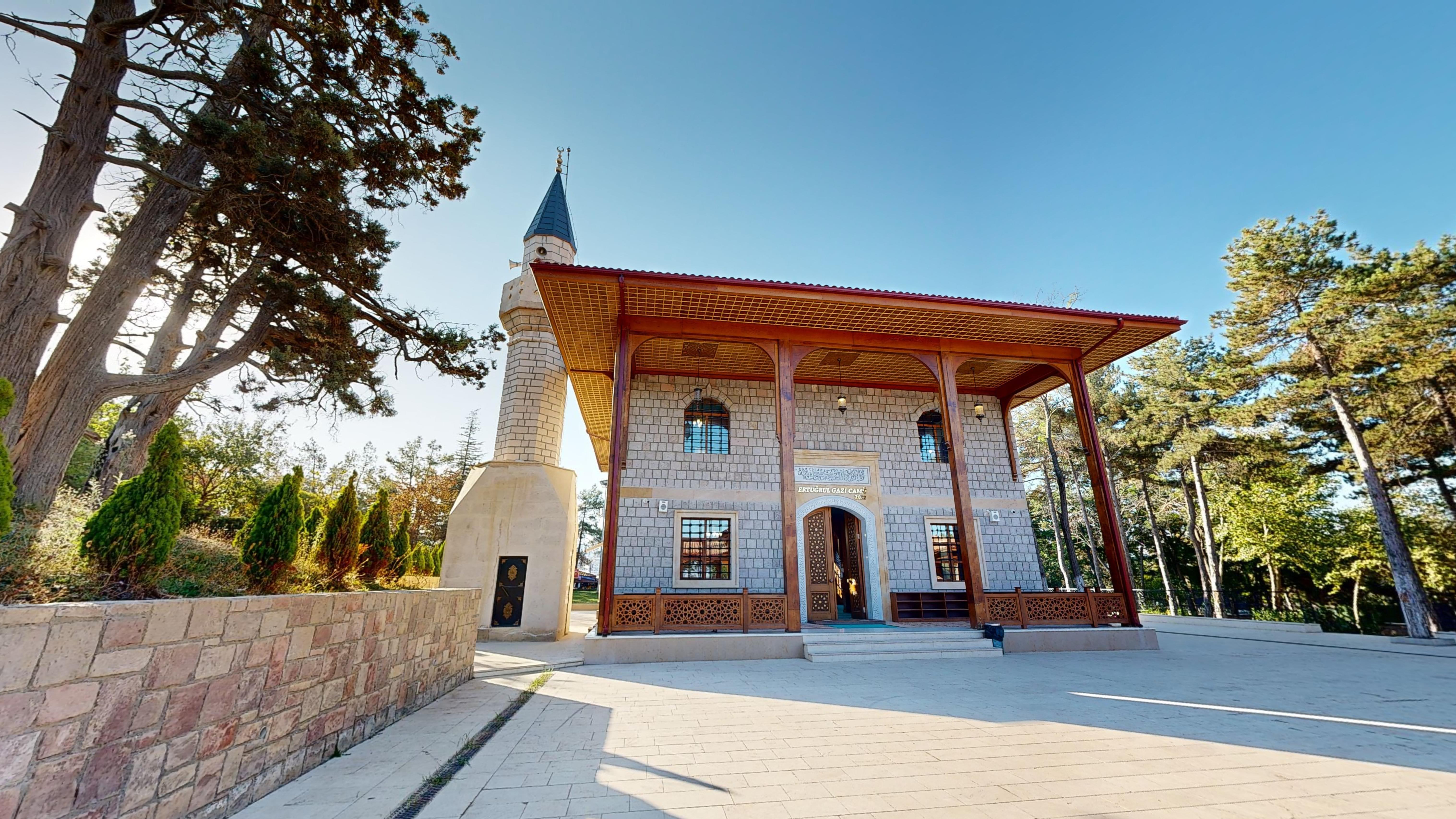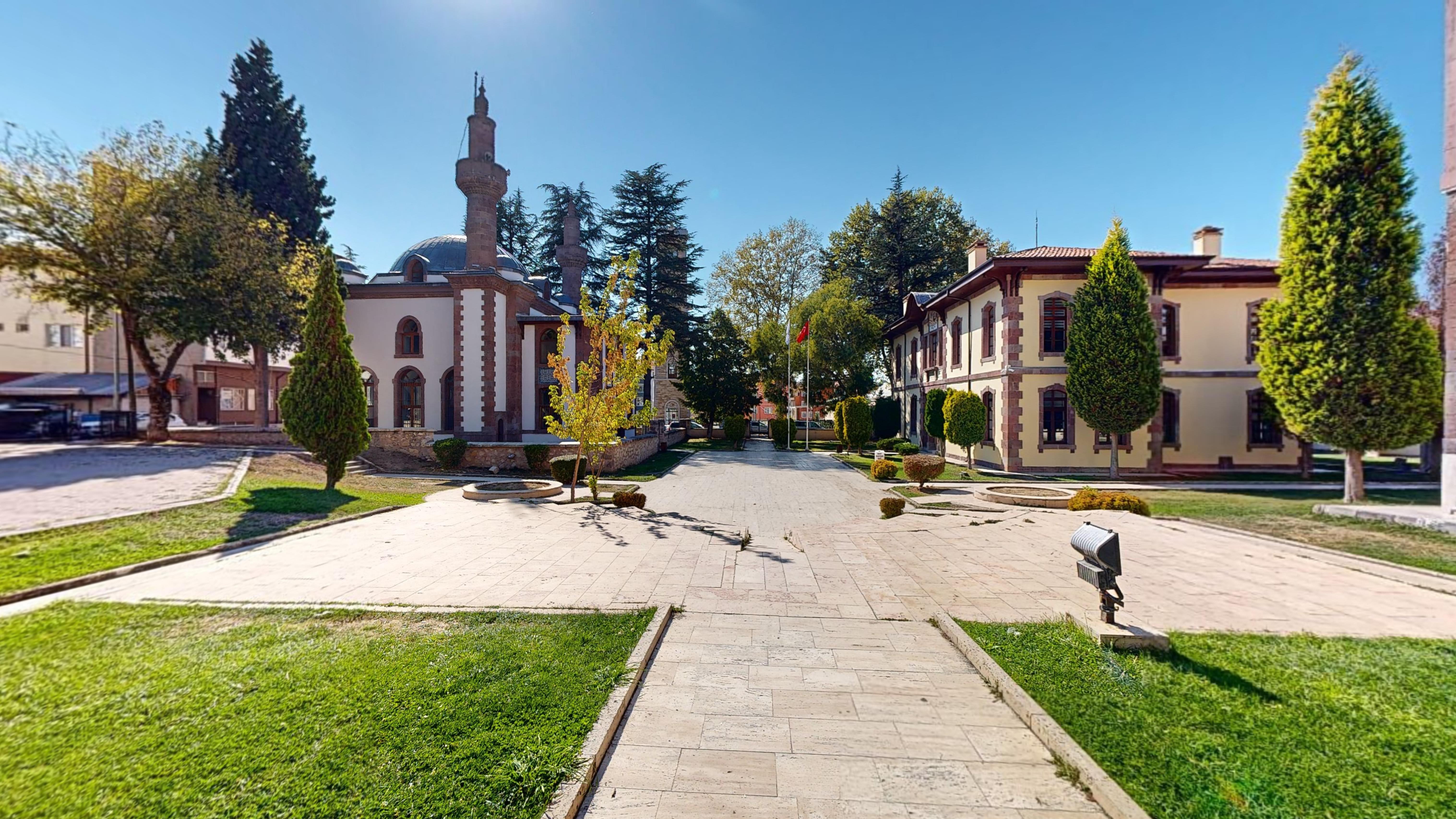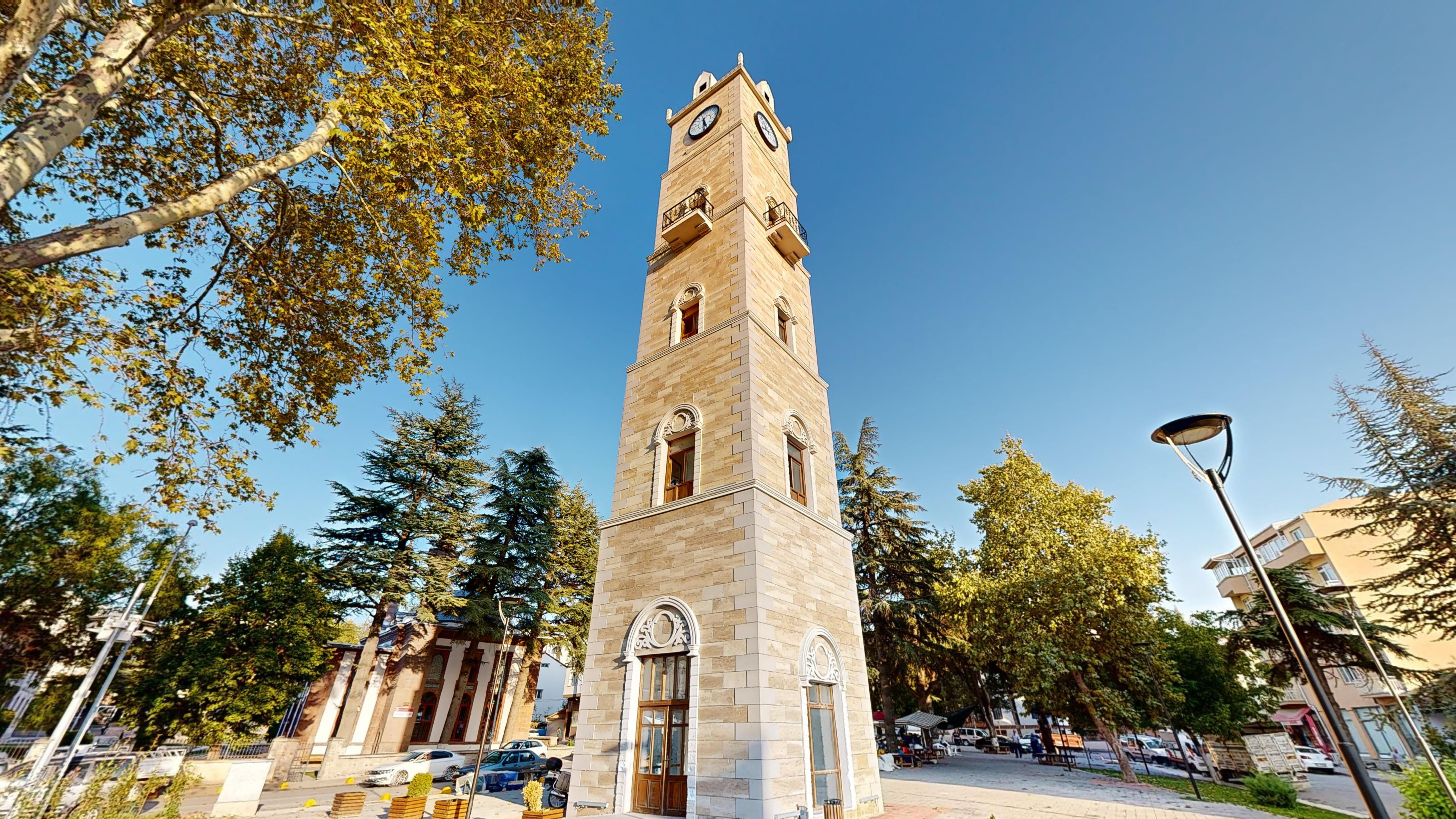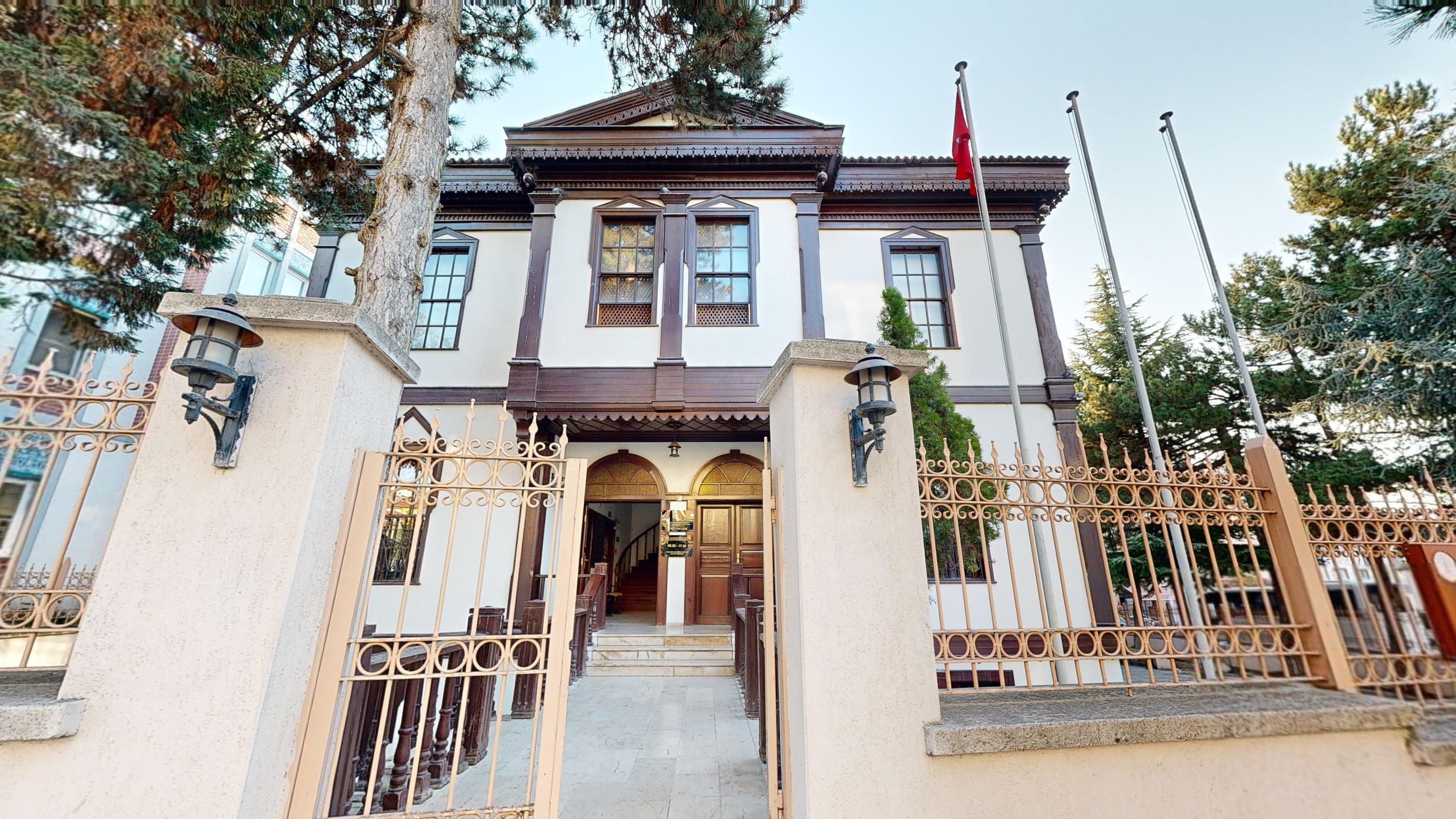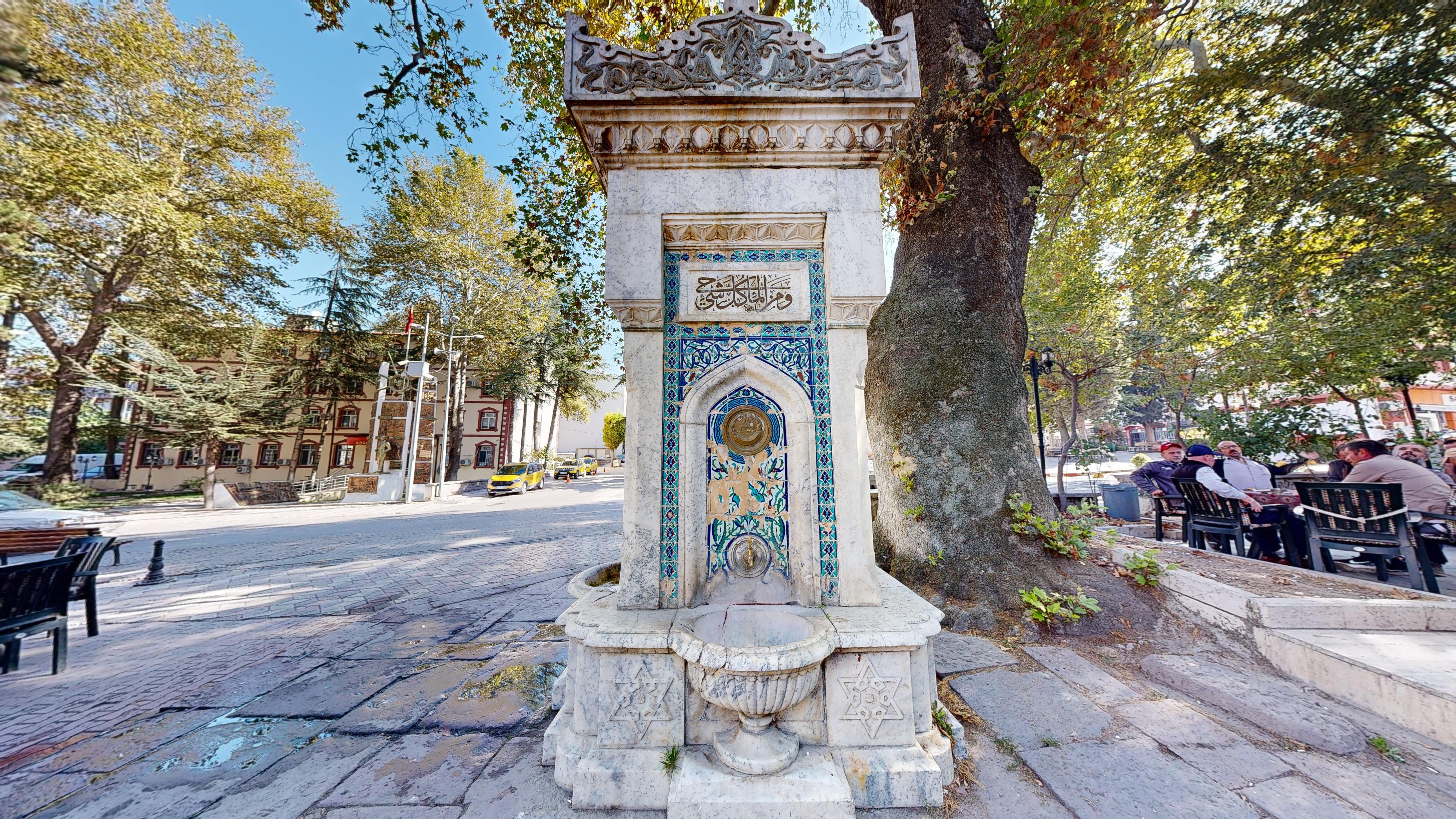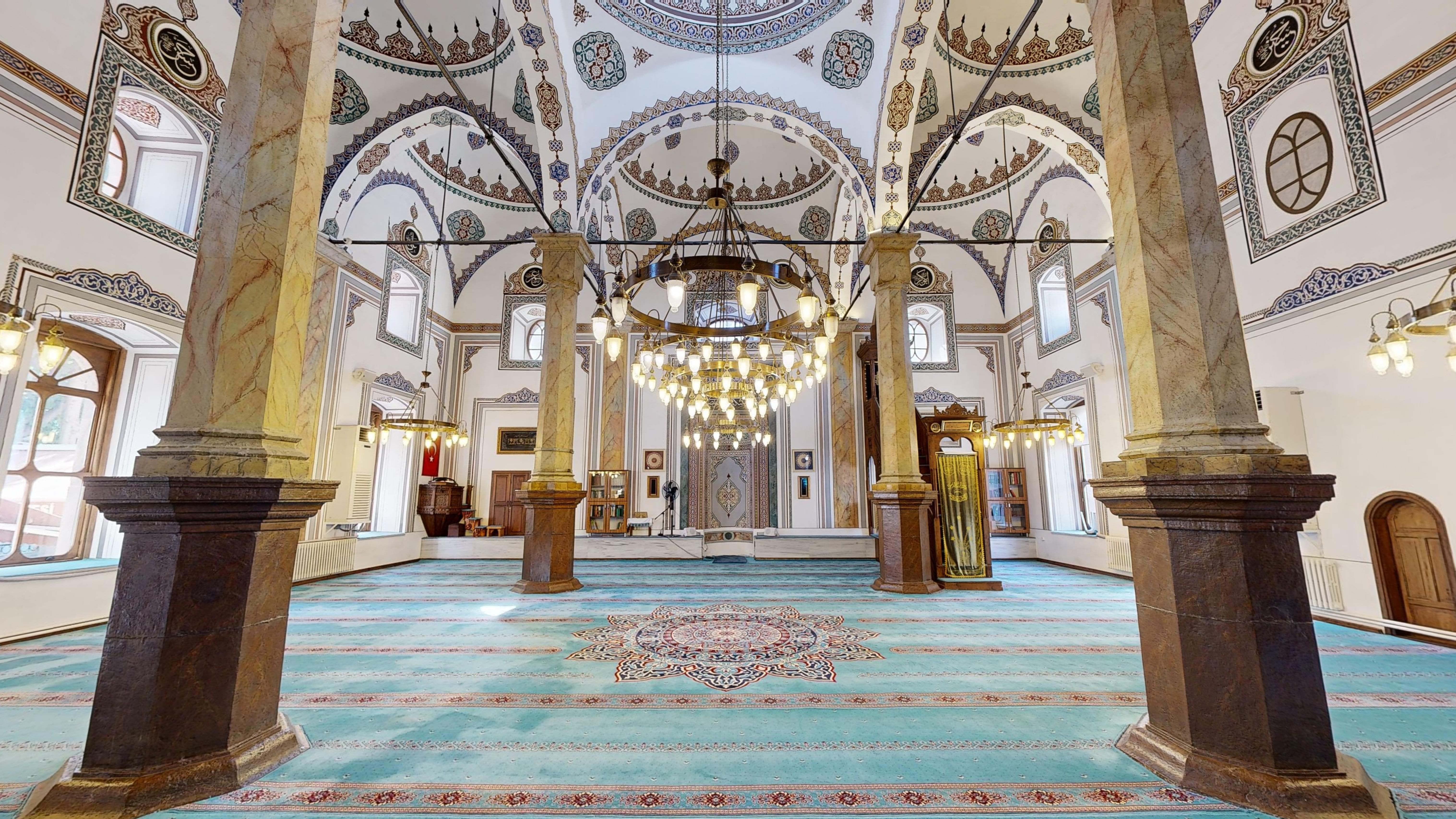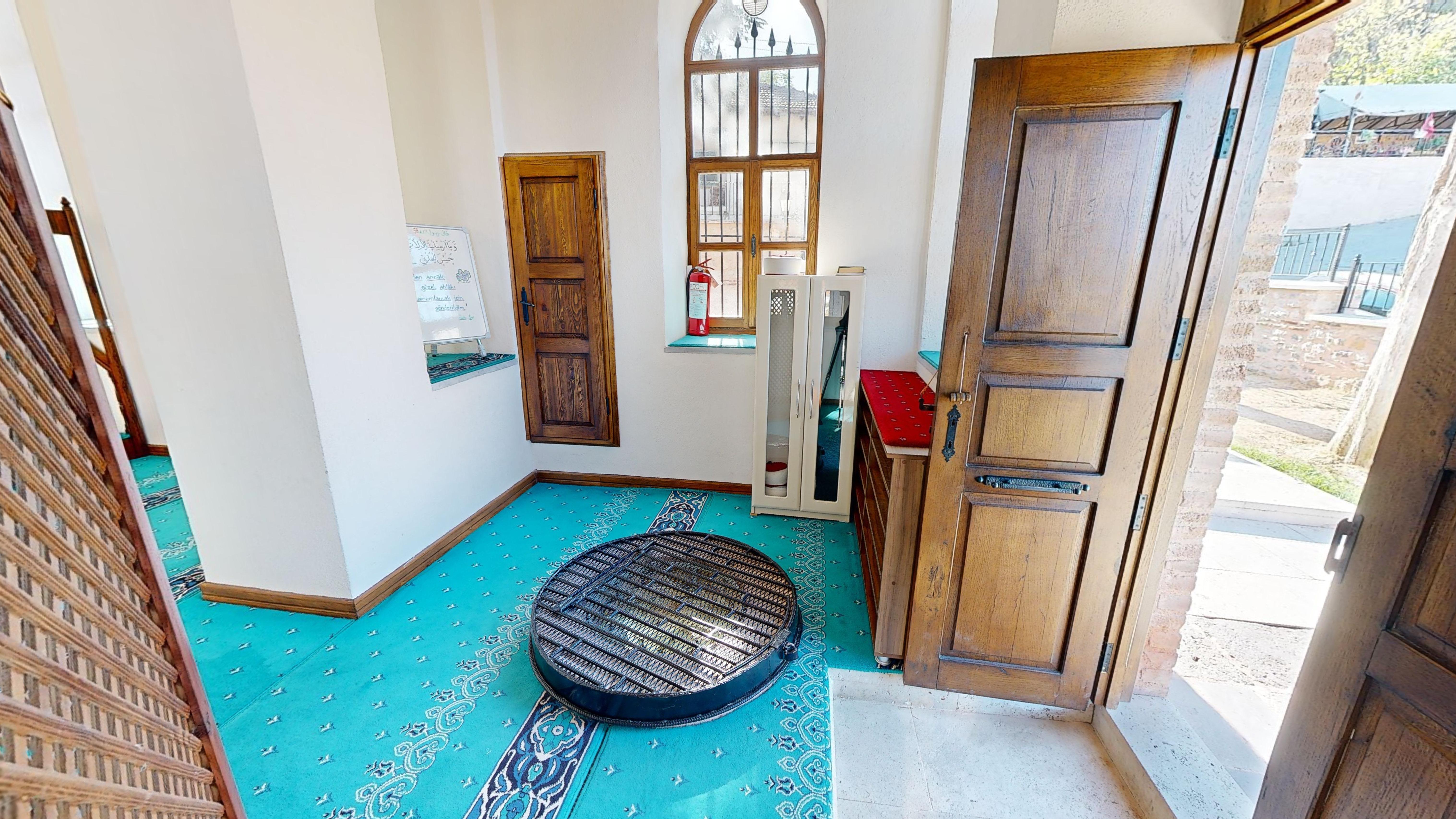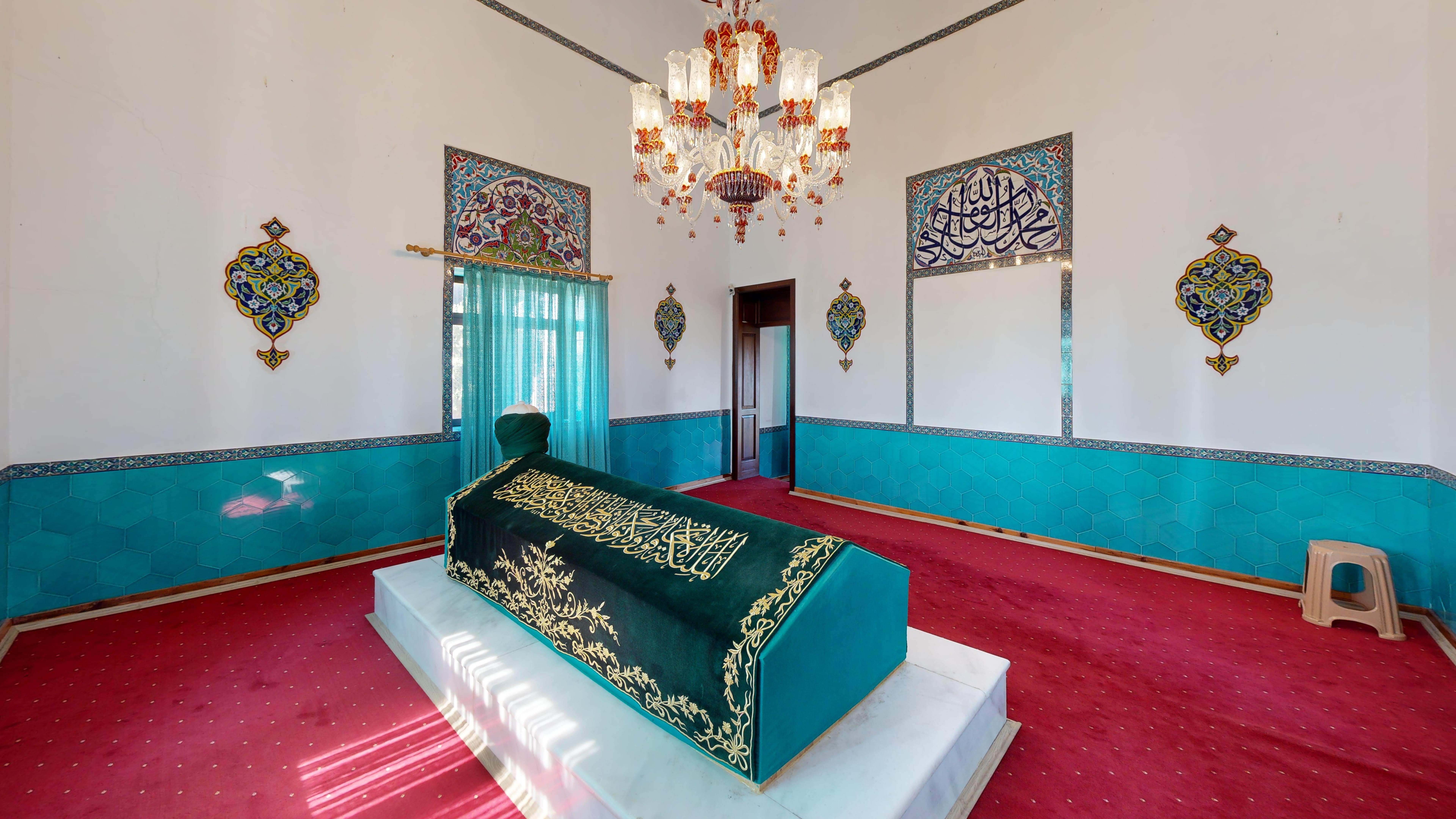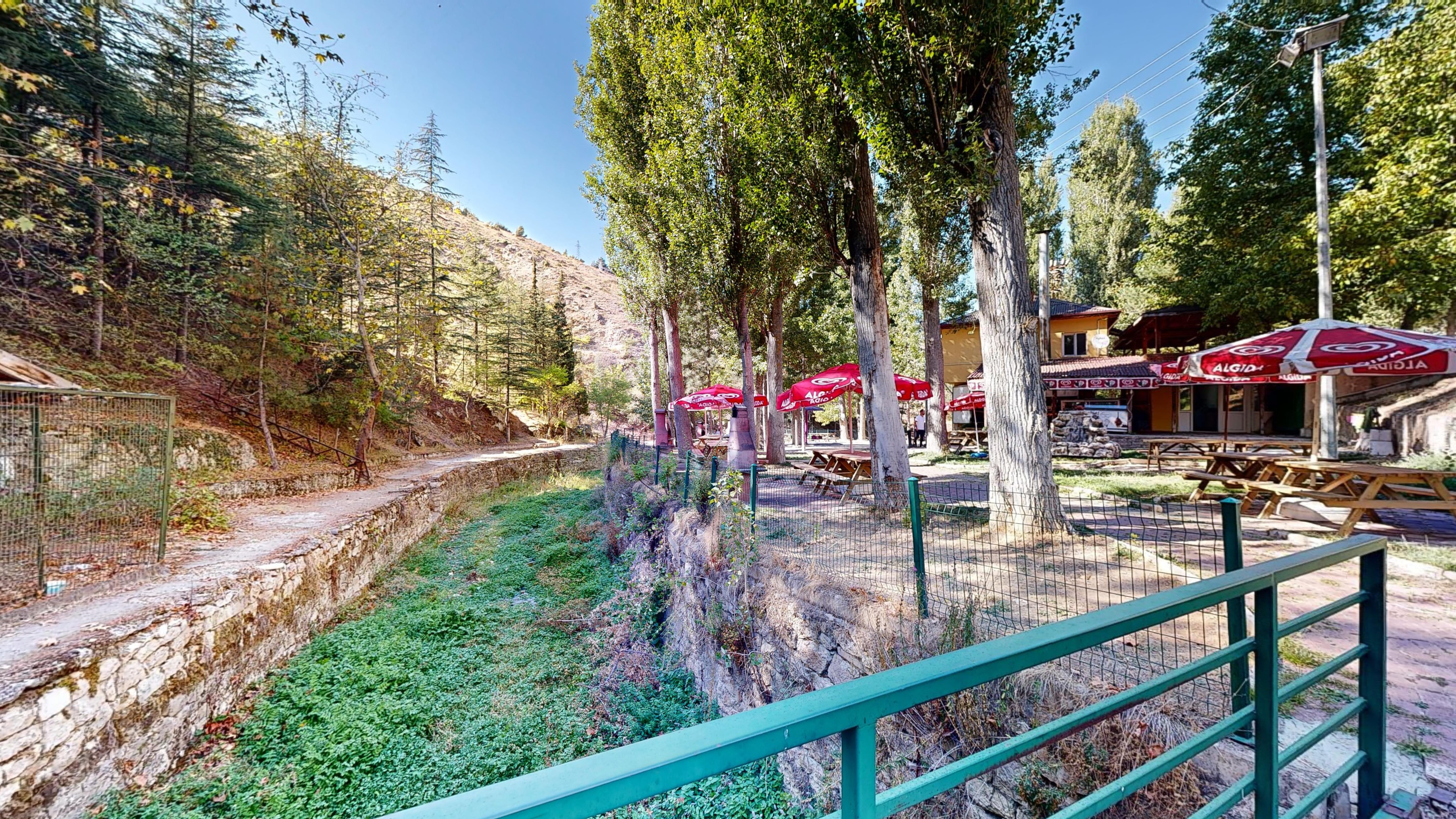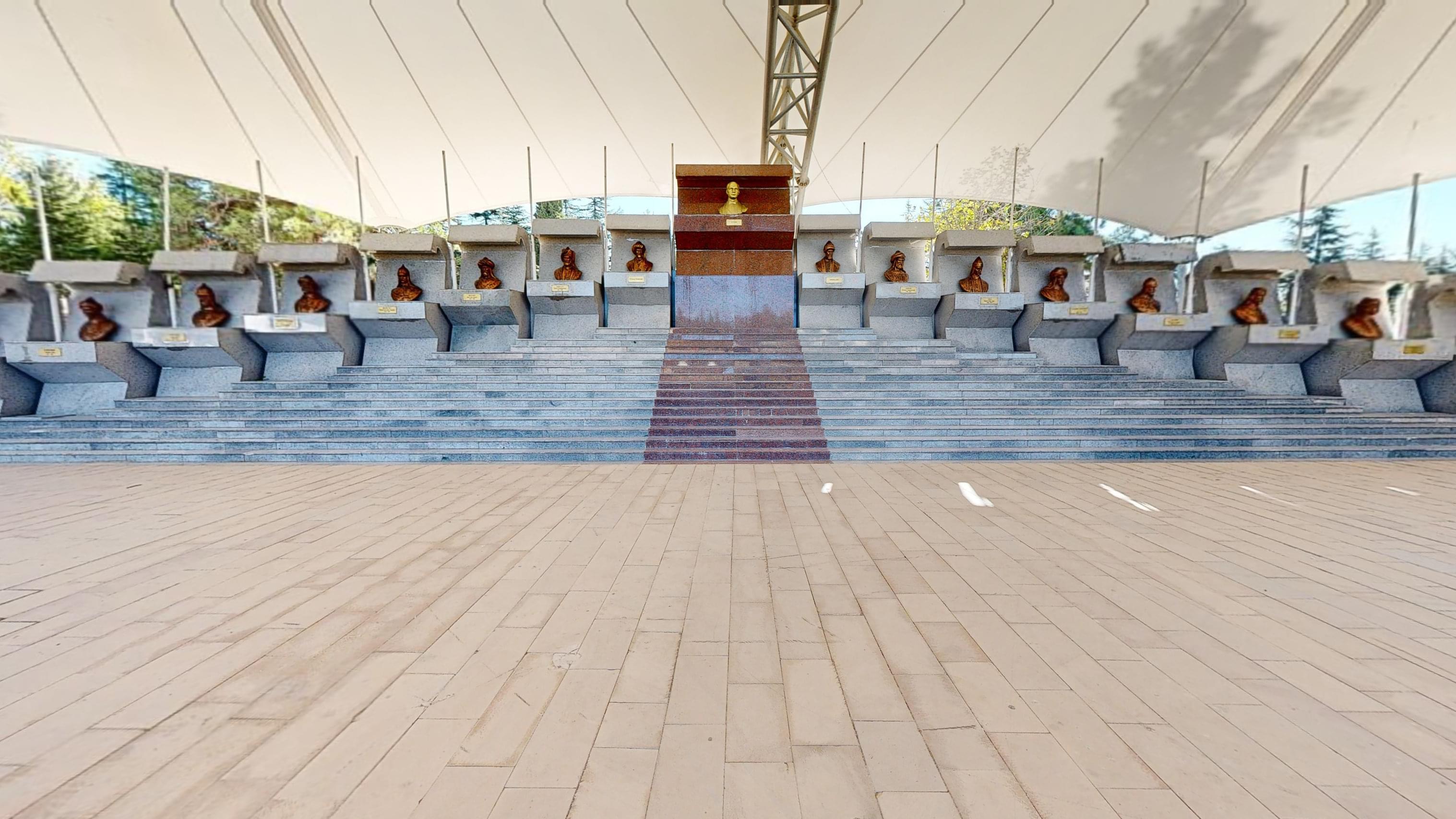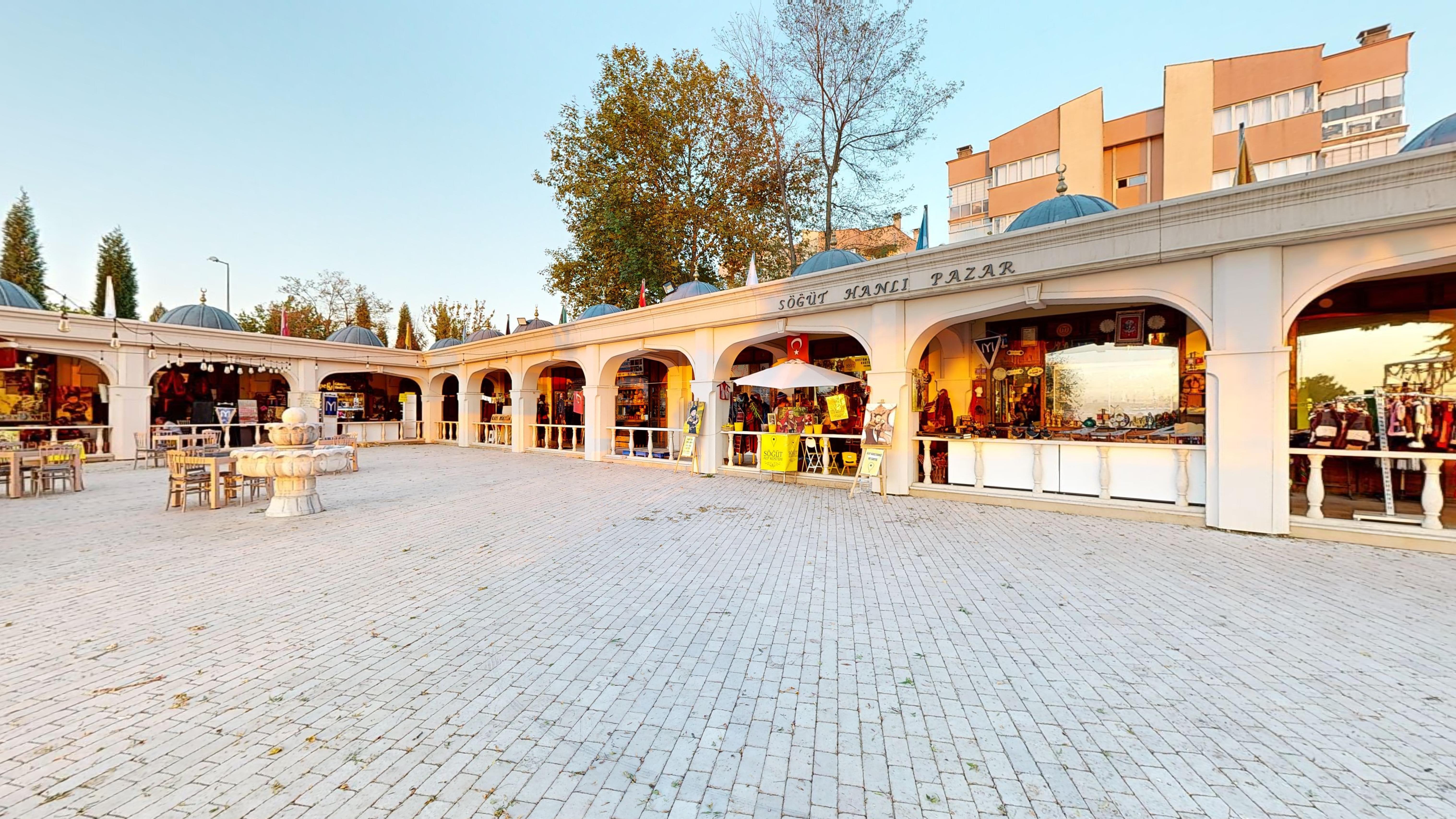Ertuğrul Gazi was buried in Söğüt when he died in the year (H. 680, 1281-1282 AD) at the age of ninety-three. Ertuğrul Gazi’s grave was first arranged as an open grave by Osman Bey between the years 1281-1285. There is no clear information about whether it was built as a tomb. Because if it had been a tomb, Osman Bey would have been buried in the tomb when he died. It is seen that Osman Bey was first buried in the garden 5-6 meters outside the current location of the tomb. According to his will, his grave was later removed and taken to the Gümüşlü Dome in Bursa.
A document from the period of Orhan Gazi determined that he was allocated a salary and duty as the ‘’Servant of the Türbe-i Ertuğrul’’ in Söğüt. It is understood from this that the first stones of the tomb were placed during the Orhan Gazi period.
Considering that a mosque was built here during the period of Çelebi Mehmet Bey, it is also estimated that Çelebi Mehmet had his ancestor's grave built as a tomb or repaired it.
The first data corresponds to the year 1171 according to the Islamic calendar (1757 according to the Gregorian calendar). The phrase "Maşa'allah 1171" was found on a stone in the arch connection of the main tomb door. When the condition of this stone was examined, it was determined that this stone was placed between the new stones during the repair. The year 1757 corresponds to the periods of Osman III and Mustafa III. It is understood from this stone that a major repair was made in 1757, as if it were being rebuilt.
Charles Texıer (Şarl Teksiye), who saw the tomb during the period of Sultan Mahmud II in 1832, described the place in his book as follows: "This tomb is located in the vicinity of a city at the mouth of a valley surrounded by mulberry groves. The tomb of the Sultan is a building in the style of a small church and called a mausoleum like those built in Bursa… Ertuğrul’s tomb rising among cypress and plane trees is one of the works to be seen in the East (culture).’’
Charles Texıer (Şarl Teksiye) reports that the dome of the tomb is not pointed as in the Seljuk style, but round in shape, reminiscent of a tent.
This tomb, built in 1171 AH, was largely repaired during the reign of Sultan Abdülmecid II, when it was seen to be worn out; in addition, one or two fountains and a fountain or a fountain were built.
Due to the wear and tear and collapse of this building over time, Abdülhamit II drew a map of the place in 1886 and had the building rebuilt from scratch. The interior was decorated with the rich tiles of the period, and the coffin was also rebuilt from marble. Its exterior was surrounded by a courtyard wall, and its door opened facing Söğüt. There is also an inscription placed above the entrance section of the tomb. The inscription consists of 24 verses in 12 lines in beautiful Naskh.
The tomb in its current form was built on a hexagonal plan with a dome on top and an entrance on the east side. Its walls were built with one row of stone and three rows of bricks. The dome was illuminated with three windows in the lower row covered with lead.
In the early 1900s, the tomb of Ertuğrul Gazi Hazretleri was perfectly repaired again with funds from the state treasury and under the supervision of the Old Söğüt District Governor Zühtü Bey.
The interior of the tomb was decorated with various embroideries, tiles and chandeliers, candlesticks and large clocks befitting the greatness of the sultan. The shawl (cover) sent by the sultan to bring goodness was placed on the blessed one's coffin. The ruined and scattered graves of Hazreti Gazi, his son Sarı Yatı (Savcu Bey) who was buried in the garden outside the Türbe-i Şerif with his harem (wife) and 25 other nobles and tribesmen who served Hazreti Gazi with their bravery were repaired and stones were made with their names and erected. Iron bars were placed around these graves.
Ertuğrul Gazi Mausoleum went through its most difficult days during the occupation periods. It is said that Söğüt and the Mausoleum were damaged during Timur's Anatolian campaign. However, the greatest damage was during the Greek occupation of Anatolia.
The Greeks burned Söğüt while retreating after the Second Battle of İnönü and caused damage to the Ertuğrul Gazi Mausoleum that is still evident today. Since it was said that the gold of the Turks was hidden in the mausoleum, the coffin of the mausoleum was opened and plundered under the pretext of searching for gold. When they could not find gold, they insulted them by saying, “Get up, old Turk, see the state of your children, come and save them.” Not only that, the bullets they fired into the iron-covered windows and walls can still be seen today.
During this period, the tiles were removed, the valuable manuscript of the Quran and the valuable chandeliers, candlesticks and rugs were taken away by the Greeks.
The Turkish troops that started to chase the Greeks from the Gündüzbey line arrived and showed their strength to the plundering Greeks who asked where their children were.
Söğüt is a town on the main road since its establishment. The historical road extending from Mudanya-Bursa and Gemlik Pier to Konya passed through Söğüt. Especially after the conquest of Istanbul by the Turks, Mecca was reached by stopping at Söğüt. For this reason, this road was called the Hacılar Road. This road is located in the Küsnük and Mezarlık regions. Söğüt's bright period in history began in the late 13th century. During this period, the Kayı Tribe of the Oghuz Turks coming from the east would form the first nuclei of the Ottoman World State, whose borders spread to the continents of Asia, Europe and Africa, in this small town.
Osman Gazi's Dream:
According to his dream, a light coming out of Sheikh Edebali's bosom entered Osman Bey's bosom. A tree emerged from his body with the entry of this light. The tree suddenly branched out and covered many plains, mountains and rivers under its shadow. Many people benefit from these places. When Sheikh Edebali heard this dream, he interpreted it as, "Osman, son of Ertuğrul, you will be the bey after your father, you will marry my daughter Malhatun. This is the light that came from me to you, many sultans will come from your noble and pure lineage. They will bring the nations together under one roof and, with Allah's permission, ensure that they live in peace and happiness and are honored with Islam." Finally, when Ertuğrul Gazi passed away in 1281, Osman Bey was elected as the bey by the elders of the tribe. Like his father, he remained loyal to the Seljuk Sultan. He expanded his lands by organizing expeditions to Sorkun, Taraklı, Göynük. He captured Yarhisar and Bilecik and conquered İnegöl in 1299. During this time, he took the side of the sultan in the rebellion movement started by the Ilkhanids against Alaeddin Keykubat III. For these benefits and also in return for the places he conquered, Osman Bey was given a flag and a flag. These gifts given to Osman Bey and the playing of the drum in the Küsnük (Kösnük) location during the acceptance of these gifts are considered by historians to be a big step towards establishing a new state.
According to the narration in the history of Aşık Paşa, when Karacahisar was taken, Muslim people from Germiyan province and other provinces were settled in the empty houses. A market was set up. The people gathered and asked for a judge who would lead the Friday prayer and find solutions to the disagreements between them. Thereupon, Osman Bey appointed his brother-in-law Dursun Fakıh as imam preacher and judge with the consent of the people. Dursun Fakıh read the first sermon, which meant becoming an independent state, on behalf of Osman Bey during the Friday prayer in Karacahisar on September 28, 1299. Thus, it is accepted that the establishment of the Ottoman World State was declared.
Söğüt was the center of the Kayı Tribe (as the Border Principality) until the conquest of Bursa. Söğüt became the first capital of the Ottoman Empire, albeit briefly. With the conquest of Bursa, the capital became Bursa, and Söğüt became a district center affiliated to the Sultanönü Sanjak. Evliya Çelebi mentions Söğüt in his Travelogue: "Söğüt is a town with a judge, gardens, a pure atmosphere, and a pleasant place in the province of Lefke, under the jurisdiction of the Bursa Sanjak. It is a place with 700 Turkish houses covered with tiles, numerous mosques, inns and baths, and a bazaar." This modest town has also been the scene of various invasions. Evliya Çelebi states the following on this subject; "When Osmancik became Bey, he buried his father Ertuğrul in the city of Söğüt and made the city prosperous. In the era of Badehu Yıldırım, Timurlenk plundered and destroyed this city, and even the Ertuğrul Tomb is not so magnificent." he reported.
During the reign of Çelebi Sultan Mehmet and the reign of Sultan II. Abdulhamid, new construction works were carried out in Söğüt.
II. Abdulhamid selected the palace guards from the youth of Söğüt and its surroundings, and gave an official title to the Karakeçili Tribe's visits to Söğüt.
In 1905, he had a mosque and a school built in Söğüt, which were also named after him. After the Armistice of Mudros (October 30, 1918), Söğüt, like many places in Anatolia, was occupied. When it was liberated, not much remained of the old Söğüt.

